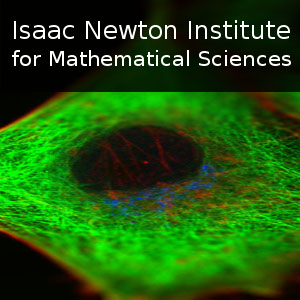Sensitivity Analysis with Degeneracy: Mirror Stratifiable Functions
55 mins 46 secs,
812.00 MB,
MPEG-4 Video
640x360,
29.97 fps,
44100 Hz,
1.94 Mbits/sec
Share this media item:
Embed this media item:
Embed this media item:
About this item

| Description: |
Fadili, J
Wednesday 6th September 2017 - 14:00 to 14:50 |
|---|
| Created: | 2017-09-07 13:50 |
|---|---|
| Collection: | Variational methods and effective algorithms for imaging and vision |
| Publisher: | Isaac Newton Institute |
| Copyright: | Fadili, J |
| Language: | eng (English) |
| Distribution: |
World
|
| Explicit content: | No |
| Aspect Ratio: | 16:9 |
| Screencast: | No |
| Bumper: | UCS Default |
| Trailer: | UCS Default |
| Abstract: | This talk will present a set of sensitivity analysis and activity identification results for a class of convex functions with a strong geometric structure, that we coin ``mirror-stratifiable''. These functions are such that there is a bijection between a primal and a dual stratification of the space into partitioning sets, called strata. This pairing is crucial to track the strata that are identifiable by solutions of parametrized optimization problems or by iterates of optimization algorithms. This class of functions encompasses all regularizers routinely used in signal and image processing, machine learning, and statistics. We show that this ``mirror-stratifiable'' structure enjoys a nice sensitivity theory, allowing us to study stability of solutions of optimization problems to small perturbations, as well as activity identification of first-order proximal splitting-type algorithms.
Existing results in the literature typically assume that, under a non-degeneracy condition, the active set associated to a minimizer is stable to small perturbations and is identified in finite time by optimization schemes. In contrast, our results do not require any non-degeneracy assumption: in consequence, the optimal active set is not necessarily stable anymore, but we are able to track precisely the set of identifiable strata. We show that these results have crucial implications when solving challenging ill-posed inverse problems via regularization, a typical scenario where the non-degeneracy condition is not fulfilled. Our theoretical results, illustrated by numerical simulations, allow to characterize the instability behaviour of the regularized solutions, by locating the set of all low-dimensional strata that can be potentially identified by these solutions. This is a joint work with Jérôme Malick and Gabriel Peyré. |
|---|---|
Available Formats
| Format | Quality | Bitrate | Size | |||
|---|---|---|---|---|---|---|
| MPEG-4 Video * | 640x360 | 1.94 Mbits/sec | 812.00 MB | View | Download | |
| WebM | 640x360 | 496.96 kbits/sec | 203.04 MB | View | Download | |
| iPod Video | 480x270 | 522.14 kbits/sec | 213.27 MB | View | Download | |
| MP3 | 44100 Hz | 249.78 kbits/sec | 102.12 MB | Listen | Download | |
| Auto | (Allows browser to choose a format it supports) | |||||

